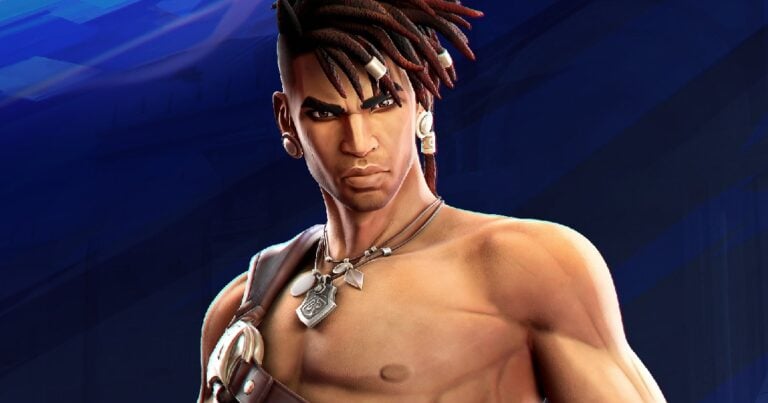Why Prince of Persia: The Lost Crown is 2024’s first surprise hit, plus The Last of Us Part II Remastered and Logitech’s Casa Pop-Up Desk.
When Prince of Persia: The Lost Crown was announced it surprised many, mainly because it had nothing to do with the long-troubled remake of the 2003 classic, Sands of Time. But with a 10+ year hiatus, fans wondered if there was any juice left in the franchise’s tank.
The answer to that is a resounding yes, because Prince of Persia: The Lost Crown is a confident, highly polished return to form for the series that’ll please old fans and newcomers alike.
Interestingly in The Lost Crown you actually play as Sargon, a newer member of the ‘Immortals’ that are tasked with saving the titular prince who has been kidnapped.
It’s a surprising move that after chatting to the game’s Senior Producer, Abdelhak Elguess, it was a pretty early decision by the team. “We wanted was really to make a Prince pf Persia game, and also bring new stuff and add some twist to previous games. The decision “not to focus on the Prince” was one them, like giving the rewind power to the main antagonist …
It was also something quite natural, because we wanting to explore the Persian mythology, so having the adventure occurring centuries before the other Prince of Persia games.”
Though the change might be controversial, in reality The Lost Crown doesn’t suffer one little bit. In fact, by switching things up, it has allowed the team to make plenty more pivots at the same time.
Love Film & TV?
Get your daily dose of everything happening in music, film and TV in Australia and abroad.
Case in point – the game’s pivot to a sidescrolling Metroidvania structure cleverly paves new roads for the franchise, while also paying tribute to some of its past. Though it takes a couple of hours to get properly warmed up, once The Lost Crown’s map opens up, it’s a lot of fun to explore.
That’s especially amplified if you choose to place your own markers for blocked/unavailable paths – the game smartly taking a photo alongside the marker to make it easier to return later on. Each biome also has its own visual style and there’s a healthy level of variety between platforming challenges, goodies to find and foes to fight.
“We made a lot of iteration in the global rhythm of the games, to have some intense sequences, some moment to explore, and some to stop and think…” Elguess explains. “That was a big challenge in a such big world!”
Speaking of challenge though, you’ll cop most of it in combat. I wasn’t expecting such fast-paced reactive combat and as such early deaths were frequent. Before long though I was incredibly confident with parrying (a necessary skill to progress) and enjoying the dance-like rhythm. Even still though, be prepared for a bit of a fight.
“To respect the DNA of Prince of Persia, we wanted to have a challenging game,” Elguess tells me of this challenge. “…But we also wanted to open this genre to mainstream players, so we made a lot of efforts on solving some hurdles. We offer a lot of difficulty options to customise, new tools to help people memorise the world, and a guided mode for people who may be lost or who do not enjoy too much feeling lost.
There’s clearly a lot of love and attention put into Prince of Persia: The Lost Crown, and such care has already helped cement this as one of 2024’s best games. Well worth checking out.
Prince of Persia: The Lost Crown is out now on PS5, Xbox Series X/S, PS4, XBO, Switch and PC. You can grab it from Amazon here.
Also out now…
The Last of Us Part II Remastered (PS5)
With The Last of Us now fully known in the mainstream space and Season 2’s production now underway, it makes sense for PlayStation to release a spruced up version of The Last of Us Part II with this ‘Remastered Edition’. But while many gamers will instantly try to assess just how much better this new iteration looks, it’s actually one of the least interesting elements of this new package.
The biggest and best addition actually comes in the form of ‘No Return’, a roguelike survival mode that sees your ‘runs’ consisting of working your way through a series of randomised challenges. In one instance you might be taking on waves of dangerous enemies, while in another you’re trying to crack a safe in a tight amount of time.
Each character possesses their own unique traits which adds a bit of spice to the mix, but overall No Return is a great way to make use of The Last of Us Part II’s incredibly strong combat mechanics. The only downside is that unlike the strangely timed God of War Ragnarok Valhalla, there’s no additional story beats in this mode.
Instead, fans who are well versed with the core story will likely get more mileage out of both director commentary tracks and the ‘Lost Levels’. The former provides a fresh way to play through the main lengthy campaign and gives new insights into the game’s development, while the latter are incredibly interesting segments that were cut out from the original game. Even better is that they also feature commentary as you play to explain why these levels never made the final cut.
Whether or not you feel the need to shell out for an extra edition of The Last of Us Part II is totally your call, but if you do, know that this is a well-rounded package with plenty of extra bits and bobs to help justify the price tag.
Hands-on with the Logitech Casa Pop-Up Desk
If you’re anything like me, your gaming space is all encompassing – filled with all sorts of knick-knacks and peripherals. But while that’s great for a bit of casual play, it also comes at the expense of a proper ergonomic work station, especially when working from home.
Logitech understands these woes and have now smartly crafted the Casa Pop-Up Desk to allow anybody to quickly set up a workstation anytime and anywhere. I’ve been using the Casa Pop-Up for a little while now and if you can get past the slightly steep price tag (the unit retails for $289.95) it could just become your new favourite investment
But what are you getting for almost $300? Well, each Casa comes with a laptop stand, keyboard and touchpad – all completely wireless via Bluetooth. Essentially, if you work primarily from a work laptop, it’s everything you need to set yourself up with a much more reasonable setup. The good news is that each component is surprisingly sturdy. The keyboard, for example, packs a good amount of heft and responded well to my usual typing pressure. There was also no noticeable lag via the Bluetooth connection.
The Casa Touch meanwhile, gives off strong Apple vibes but is slightly more controversial. While it’s undeniably functional, and I can understand wanting to match the input method of a user’s laptop, the trackpad was never quite able to match the speed and responsiveness of a standard mouse. That said, I never had any issue with its performance and will purely come down to personal preference.
Finally there’s the stand, which did well to support my laptop, and I was never concerned that support would falter. Even better is that the stand allowed for much better ergonomics, although it’s worth pointing out that it can only handle the one angle.
When you’re wrapped up for the day, both the touch pad and keyboard can be neatly stowed inside the case – resembling something of a large notepad. It’s unquestionably the Casa Pop-Ups biggest selling point and a great space saver if you’re somebody who works from a living room or kitchen.
All in all I was pretty impressed with the Casa Pop-Up. Sure, you could arguably invest in more efficient peripherals, but if space saving is key, then this stylish package is hard to overlook.
For more on this topic, follow the Gaming Observer.


































